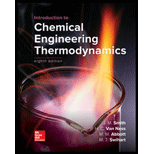
(a)
Interpretation:
Assuming Raoult’s law is valid we need to find the values of liquid mole fraction of n-pentane(1) and vapor mole fraction of n-pentane(1) for a binary system of n-pentane(1) and n-heptane(2) for temperature 65°C and when total pressure
Assuming Raoult’s law is valid we need to plot the total pressure P, liquid mole fraction of n-pentane (1), x1, vapor fraction of n-pentane (1), y1 vs. fraction of system that is vapor V for the binary system of n-pentane(1) and n-heptane(2) at these same conditions at temperature
Concept introduction:
Raoult’s Law states that the partial pressure of liquid A above the solution is equal to the mole fraction of the liquid in a solution times the partial pressure of the pure liquid. This holds for ideal solutions. An ideal solution is approached by binary solutions of molecules that have similar properties (e.g. benzene and toluene). The law is mathematically expressed as-
Where
A solution behaves ideally when
- The solute and the solvent molecules have similar sizes and similar intermolecular forces,
- The excess volume of mixing is zero, and
- The heat of mixing is zero when both the solute and the solvent are liquids
(a)
Answer to Problem 13.4P
V is linear in z1
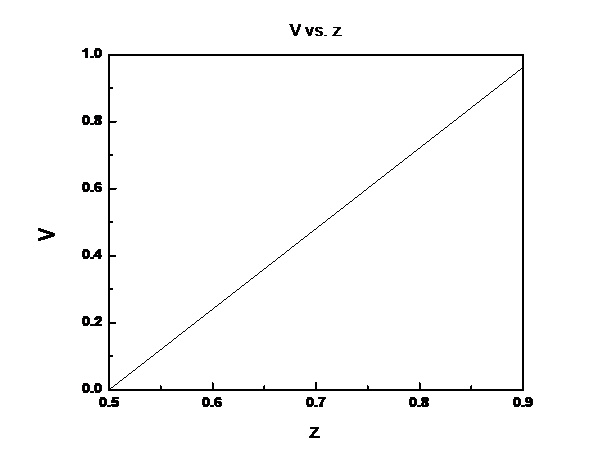
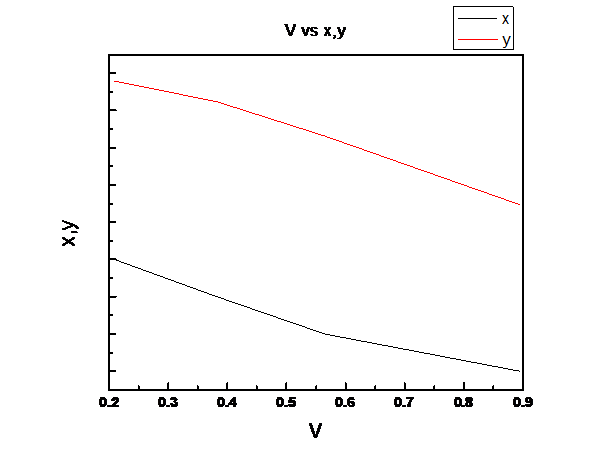

Explanation of Solution
Find the value of
The Raoult’s law expression for two components A and B to give the equilibrium partial pressure of the components in a binary mixture is written as follows-
and
The total pressure:
Where
The mole fraction of A in the vapor phase is given by -
Similarly, mole fraction of B in vapor phase is given by -
Now vapor pressures
Now, For n-pentane (1)
And For n-heptane (2)
Now vapor pressure for n-pentane (1) can be calculated using Antoine equation as follows: -
Now vapor pressure for n-heptane (2) can be calculated using Antoine equation as follows:
Therefore, total pressure,
By equating total pressure
Using the formula
we find 
For the given temperature, z1 ranges from the liquid composition at the bubble point to the vapor composition at the dew point.
Now,
So, V is linear in z1

Now, For n-pentane (1)
And For n-heptane (2)
Now vapor pressure for n-pentane (1) can be calculated using Antoine equation as follows: -
Now vapor pressure for n-heptane (2) can be calculated using Antoine equation as follows:
So, the expression for total pressure
Using the formula
we find 
Now,
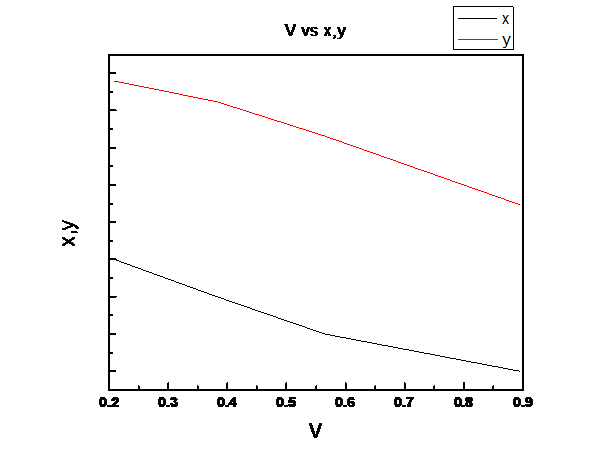

(b)
Interpretation:
Assuming Raoult’s law is valid we need to find the values of liquid mole fraction of n-pentane(1) and vapor mole fraction of n-pentane(1) for a binary system of n-pentane(1) and n-heptane(2) for temperature 75°C and when total pressure
Assuming Raoult’s law is valid we need to plot the total pressure P, liquid mole fraction of n-pentane (1), x1, vapor fraction of n-pentane (1), y1 vs. fraction of system that is vapor V for the binary system of n-pentane(1) and n-heptane(2) at these same conditions at temperature
Concept introduction:
Raoult’s Law states that the partial pressure of liquid A above the solution is equal to the mole fraction of the liquid in a solution times the partial pressure of the pure liquid. This holds for ideal solutions. An ideal solution is approached by binary solutions of molecules that have similar properties (e.g. benzene and toluene). The law is mathematically expressed as-
Where
A solution behaves ideally when
- The solute and the solvent molecules have similar sizes and similar intermolecular forces,
- The excess volume of mixing is zero, and
- The heat of mixing is zero when both the solute and the solvent are liquids
(b)
Answer to Problem 13.4P
V is linear in z1


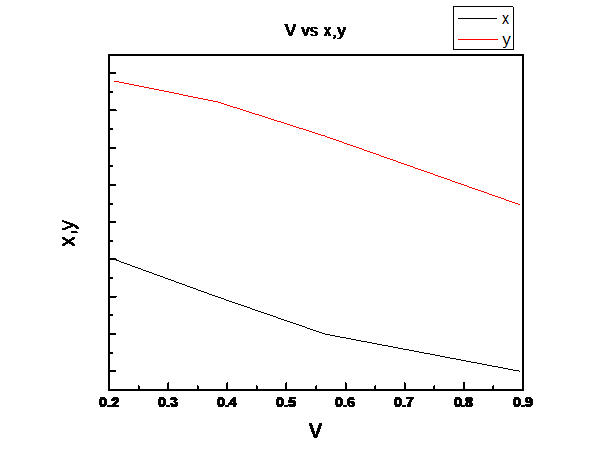

Explanation of Solution
The Raoult’s law expression for two components A and B to give the equilibrium partial pressure of the components in a binary mixture is written as follows-
and
The total pressure:
Where
The mole fraction of A in the vapor phase is given by -
Similarly, mole fraction of B in vapor phase is given by -
Now vapor pressures
Now, For benzene (1)
And For toluene (2)
Find the value of
Now, For n-pentane (1)
And For n-heptane (2)
Now vapor pressure for n-pentane (1) can be calculated using Antoine equation as follows: -
Now vapor pressure for n-heptane (2) can be calculated using Antoine equation as follows:
Therefore, total pressure,
By equating total pressure
Using the formula
we find 
For the given temperature, z1 ranges from the liquid composition at the bubble point to the vapor composition at the dew point.
Now,
So, V is linear in z1
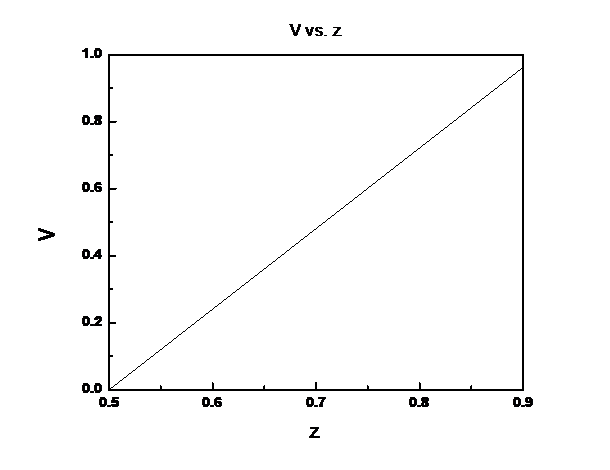

Now, For n-pentane (1)
And For n-heptane (2)
Now vapor pressure for n-pentane (1) can be calculated using Antoine equation as follows: -
Now vapor pressure for n-heptane (2) can be calculated using Antoine equation as follows:
So, the expression for total pressure
Using the formula
we find 
Now,
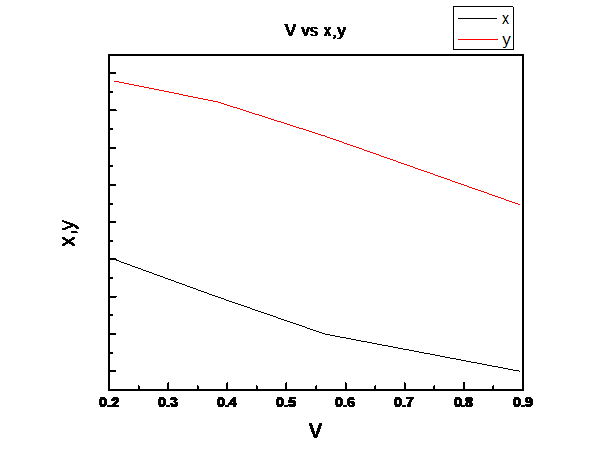

(c)
Interpretation:
Assuming Raoult’s law is valid we need to find the values of liquid mole fraction of n-pentane(1) and vapor mole fraction of n-pentane(1) for a binary system of n-pentane(1) and n-heptane(2) for temperature 85°C and when total pressure
Assuming Raoult’s law is valid we need to plot the total pressure P, liquid mole fraction of n-pentane (1), x1, vapor fraction of n-pentane (1), y1 vs. fraction of system that is vapor V for the binary system of n-pentane(1) and n-heptane(2) at these same conditions at temperature
Concept introduction:
Raoult’s Law states that the partial pressure of liquid A above the solution is equal to the mole fraction of the liquid in a solution times the partial pressure of the pure liquid. This holds for ideal solutions. An ideal solution is approached by binary solutions of molecules that have similar properties (e.g. benzene and toluene). The law is mathematically expressed as-
Where
A solution behaves ideally when
- The solute and the solvent molecules have similar sizes and similar intermolecular forces,
- The excess volume of mixing is zero, and
- The heat of mixing is zero when both the solute and the solvent are liquids
(c)
Answer to Problem 13.4P
V is linear in z1
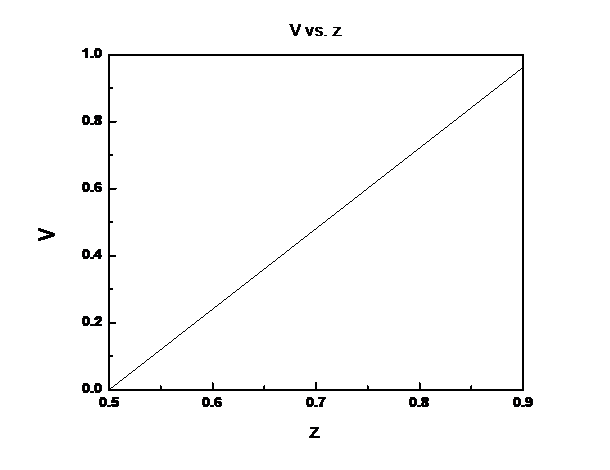



Explanation of Solution
The Raoult’s law expression for two components A and B to give the equilibrium partial pressure of the components in a binary mixture is written as follows-
and
The total pressure:
Where
The mole fraction of A in the vapor phase is given by -
Similarly, mole fraction of B in vapor phase is given by -
Now vapor pressures
Now, For benzene (1)
And For toluene (2)
Find the value of
Now, For n-pentane (1)
And For n-heptane (2)
Now vapor pressure for n-pentane (1) can be calculated using Antoine equation as follows: -
Now vapor pressure for n-heptane (2) can be calculated using Antoine equation as follows:
Therefore, total pressure,
By equating total pressure
Using the formula
we find 
For the given temperature, z1 ranges from the liquid composition at the bubble point to the vapor composition at the dew point.
Now,
So, V is linear in z1
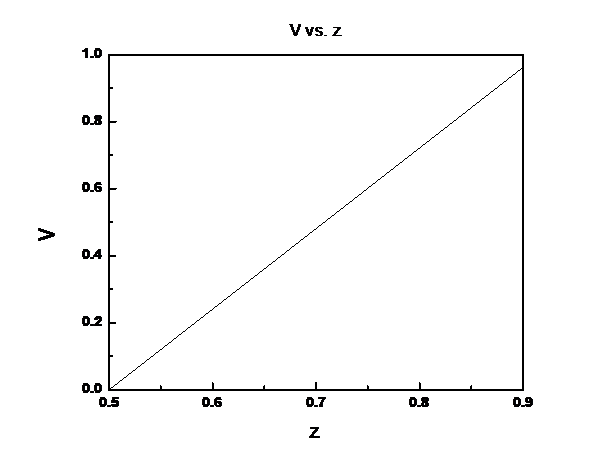
Now, For n-pentane (1)
And For n-heptane (2)
Now vapor pressure for n-pentane (1) can be calculated using Antoine equation as follows: -
Now vapor pressure for n-heptane (2) can be calculated using Antoine equation as follows:
So, the expression for total pressure
Using the formula
we find 
Now,
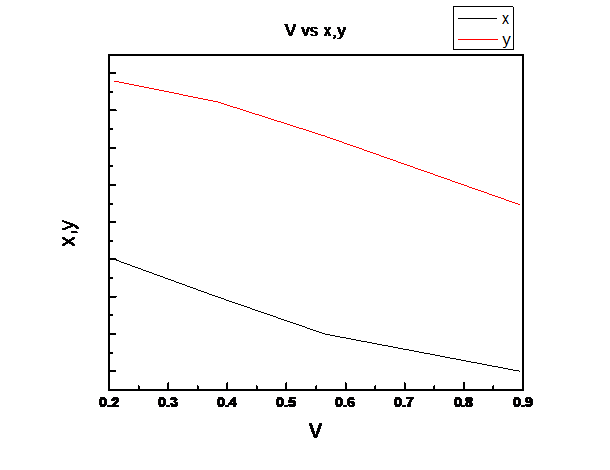

(d)
Interpretation:
Assuming Raoult’s law is valid we need to find the values of liquid mole fraction of n-pentane(1) and vapor mole fraction of n-pentane(1) for a binary system of n-pentane(1) and n-heptane(2) for temperature 95°C and when total pressure
Assuming Raoult’s law is valid we need to plot the total pressure P, liquid mole fraction of n-pentane (1), x1, vapor fraction of n-pentane (1), y1 vs. fraction of system that is vapor V for the binary system of n-pentane(1) and n-heptane(2) at these same conditions at temperature
Concept introduction:
Raoult’s Law states that the partial pressure of liquid A above the solution is equal to the mole fraction of the liquid in a solution times the partial pressure of the pure liquid. This holds for ideal solutions. An ideal solution is approached by binary solutions of molecules that have similar properties (e.g. benzene and toluene). The law is mathematically expressed as-
Where
A solution behaves ideally when
- The solute and the solvent molecules have similar sizes and similar intermolecular forces,
- The excess volume of mixing is zero, and
- The heat of mixing is zero when both the solute and the solvent are liquids
(d)
Answer to Problem 13.4P
V is linear in z1
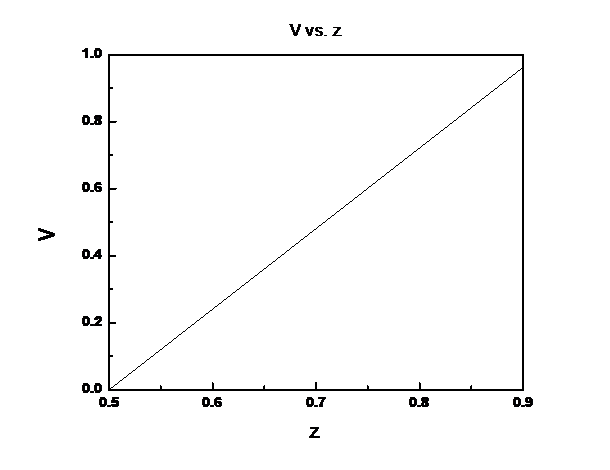



Explanation of Solution
Find the value of
Now, For n-pentane (1)
And For n-heptane (2)
Now vapor pressure for n-pentane (1) can be calculated using Antoine equation as follows: -
Now vapor pressure for n-heptane (2) can be calculated using Antoine equation as follows:
Therefore, total pressure,
By equating total pressure
Using the formula
we find 
For the given temperature, z1 ranges from the liquid composition at the bubble point to the vapor composition at the dew point.
Now,
So, V is linear in z1
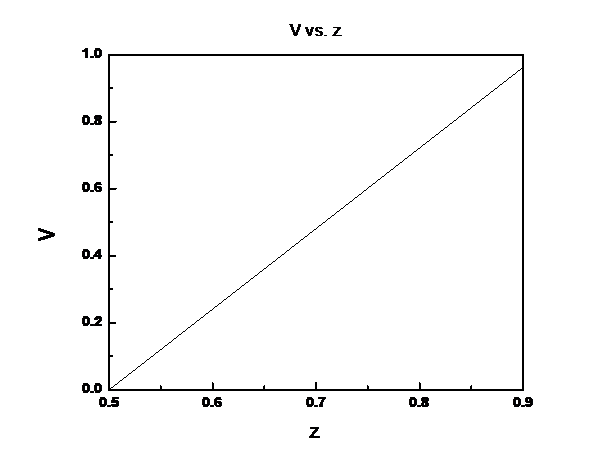 Now, For n-pentane (1)
Now, For n-pentane (1)
And For n-heptane (2)
Now vapor pressure for n-pentane (1) can be calculated using Antoine equation as follows: -
Now vapor pressure for n-heptane (2) can be calculated using Antoine equation as follows:
So, the expression for total pressure
Using the formula
we find 
Now,
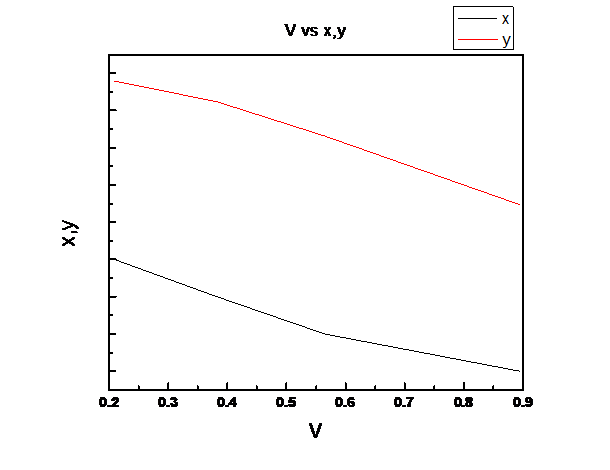

Want to see more full solutions like this?
Chapter 13 Solutions
Loose Leaf For Introduction To Chemical Engineering Thermodynamics
 Introduction to Chemical Engineering Thermodynami...Chemical EngineeringISBN:9781259696527Author:J.M. Smith Termodinamica en ingenieria quimica, Hendrick C Van Ness, Michael Abbott, Mark SwihartPublisher:McGraw-Hill Education
Introduction to Chemical Engineering Thermodynami...Chemical EngineeringISBN:9781259696527Author:J.M. Smith Termodinamica en ingenieria quimica, Hendrick C Van Ness, Michael Abbott, Mark SwihartPublisher:McGraw-Hill Education Elementary Principles of Chemical Processes, Bind...Chemical EngineeringISBN:9781118431221Author:Richard M. Felder, Ronald W. Rousseau, Lisa G. BullardPublisher:WILEY
Elementary Principles of Chemical Processes, Bind...Chemical EngineeringISBN:9781118431221Author:Richard M. Felder, Ronald W. Rousseau, Lisa G. BullardPublisher:WILEY Elements of Chemical Reaction Engineering (5th Ed...Chemical EngineeringISBN:9780133887518Author:H. Scott FoglerPublisher:Prentice Hall
Elements of Chemical Reaction Engineering (5th Ed...Chemical EngineeringISBN:9780133887518Author:H. Scott FoglerPublisher:Prentice Hall
 Industrial Plastics: Theory and ApplicationsChemical EngineeringISBN:9781285061238Author:Lokensgard, ErikPublisher:Delmar Cengage Learning
Industrial Plastics: Theory and ApplicationsChemical EngineeringISBN:9781285061238Author:Lokensgard, ErikPublisher:Delmar Cengage Learning Unit Operations of Chemical EngineeringChemical EngineeringISBN:9780072848236Author:Warren McCabe, Julian C. Smith, Peter HarriottPublisher:McGraw-Hill Companies, The
Unit Operations of Chemical EngineeringChemical EngineeringISBN:9780072848236Author:Warren McCabe, Julian C. Smith, Peter HarriottPublisher:McGraw-Hill Companies, The





